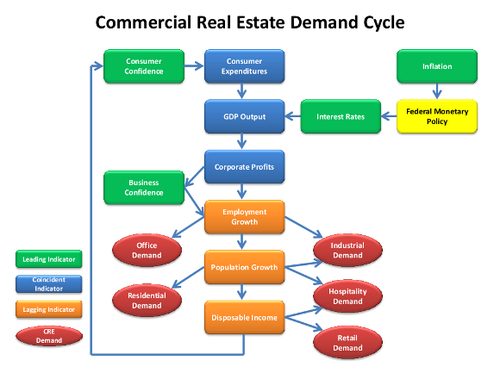
An Overview of a Real Estate Market Analysis
A real estate market analysis contains a few basic sections, and each provides key information needed for analyzing the valuation and financial feasibility of any real estate investment. The first section defines the area under consideration. Defining the area is more than just finding the lot boundaries but involves defining the size of the target market most likely to generate income. Accurately defining the target market and neighborhood allows the investor to identify competition and the current supply to meet current demand in that area.
The second section contains a thorough analysis of the physical and environmental factors impacting the real estate. Physical factors include things like location, natural resources, topography, soil conditions, climate, water availability, and transportation patterns. At first glance, some of these factors may not seem terribly important to analyzing the profitability of a real estate investment. In some cases, however, the community’s location next to an ocean or pleasant climate could be an integral part of the community’s economy, industry, and desirability. It would be impossible to fully understand the community dynamics without an appreciation of these physical characteristics.
In addition to these physical factors, the market analysis may also include more information about the neighborhood features. Often, this includes detailed information about the neighborhood’s access to public goods and services. The access to and quality of public utilities can be extremely important to commercial real estate development. Real estate developers must consider whether or not a particular parcel of land has sufficient access to utilities as well as whether those utilities are capable of meeting the additional servicing demands of the new development. If not, the developer must convince the local government to invest in upgraded utility services to the area. So, the availability of adequate utility services and construction costs should not be overlooked since they can ultimately determine the feasibility of any real estate project.
After addressing the physical factors of the location, the market analysis evaluates the economic characteristics and trends in the area. The purpose of this economic analysis is to provide an understanding of the underlying population, business conditions, and the future demand for a particular type of real estate. Trends in demographic data provide some insight into the future economic health of a region. For example, a growing population is generally a good sign of economic prosperity in a region as long as there are growing job opportunities for the residents. Population age distribution, education, and income are also important indicators of regional growth patterns.
Broader economic trends in the region as well as at the national level should also be addressed in the market analysis. Although all real estate is local, larger, macroeconomic forces have ripples throughout all local markets. As a result, interest rates, current and proposed changes to tax policies, inflation, GDP growth, and unemployment rates need to be analyzed in a market analysis. All of these factors play an important role in the growth or decline of the economic base surrounding the subject property. The CCIM institute has a nice demand cycle flow chart that puts all of this together:
Investigating other new construction in the area should also be part of a market analysis. Searching for building permits can be an excellent indicator of past development as well as new supply that will be on the market in the future. New construction is a signal that a neighborhood is considered desirable, but it can also be a source of competition for tenants or buyers. Other issues related to construction are zoning and development requirements for a new construction. The market analysis should investigate the zoning and building regulations as well as the timeline, costs, and attitude of the local planning board. These three factors alone can determine whether or not a real estate investment is financially feasible or not.
Overall, the market analysis should provide a comprehensive picture of the subject property, location, neighborhood, and the larger market economic drivers. The final document should allow the reader to understand the current supply and demand conditions for this particular type of real estate as well as a picture of how these conditions may change in the future. It should also provide conclusions about the changing demographics and regulations in the neighborhood and how those factors as well as economics could impact the subject property.
The Connection Between the Market Analysis and Financial Analysis
Not only is a thorough market analysis necessary to understand the outlook for a real estate investment, but also, it is critical to creating the real estate proforma. Proforma forecasts are simply a best, educated guess about future performance. In order to make an educated estimate, however, the investor needs a lot of background information about the market. All of this information comes from the market analysis.
For example, consider the top line in a real estate proforma. Potential Rental Income is an estimate of the maximum rent an owner could obtain at 100% occupancy. Forecasting potential rental income requires a forecast of expected future rental rates that owner can reasonably attain. An investor could simply assume a fixed annual growth rate based on past experience. A more accurate estimate of future rental rates, however, involves an analysis of current supply as well as future supply that may be entering the market. Future demand estimates involve understanding the desirability of the location relative to neighboring areas, growth patterns and traffic patterns in the area, population growth and demographics, and overall health and stability of the neighborhood’s economic base. All of these items are components of the market analysis.
The next item on a proforma accounts for vacancy. Again, it is possible for an investor to use a fixed vacancy rate every year in the analysis. Unfortunately, it is not always realistic to assume vacancy rates will never change. The expected vacancy rate is a function of future supply and demand conditions that are generated through an analysis of current available space and expected new construction, relative market pricing, and demand generated by the economic base of the area. So, any meaningful forecast of vacancy rates requires a thorough market analysis.
Estimating future operating expenses also requires an understanding of the current market costs and how they will change over time. These changes relate back to the fundamentals of the local economy and industry as well as national macroeconomic trends. The information contained in the market analysis can help determine appropriate growth rates for operating expenses.
The bottom-line net operating income gets put into a variety of valuation and feasibility models. One of the common methods for discounting net operating income to quickly generate a valuation is by using a market capitalization rate. The market capitalization rate is a measure of how buyers discounted net operating income to value nearby comparable properties. Finding the most appropriate comparables is one more component of the market analysis. So, from start to finish, the proforma and valuation models rely on the data contained in the market analysis.
Conclusion
Real estate investors should never purchase a property without conducting a thorough and detailed market analysis. Although the process of researching the location, the local market, and the larger economic influences on the population and property is time-consuming, its importance should never be overlooked. Investors don’t want to put money into an asset that will not earn a target rate of return over their anticipated holding period. Making projections and decisions without the benefit of a detailed market analysis adds unnecessary risk into an investment analysis or feasibility analysis. Not paying proper attention to the market fundamentals that generate cash flows can cause significant error in the proforma financial statements. Unfortunately, these errors could cause investors to select projects that will not end up meeting their target rate of return. Alternatively, investors could also overlook a property that does have the ability to earn a target rate of return due to errors in their cash flow forecasting model.
Source: Why Is Real Estate Market Analysis So Important?
https://www.creconsult.net/market-trends/why-is-real-estate-market-analysis-so-important/
No comments:
Post a Comment